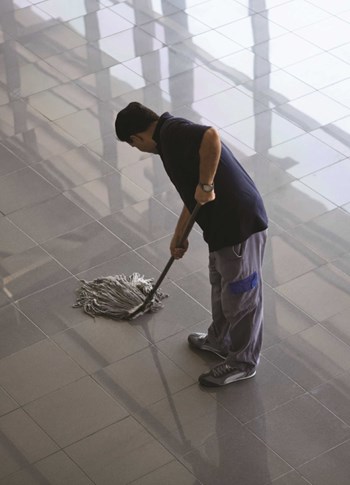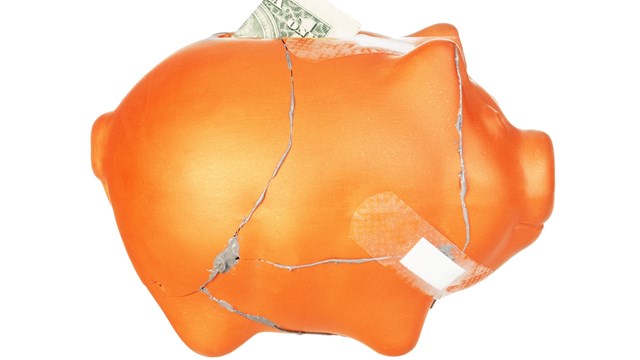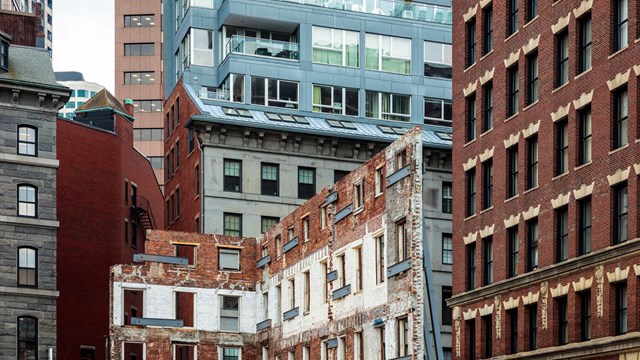
For most of us, winter is dreary enough without worrying about the grit and grime that often accompanies it. From December through March, the snows that fall require almost non-stop attention, from making sure the sidewalks stay ice-free to keeping the lobbies and common areas slush-free. For maintenance staff and management, the winter months are a never-ending struggle to keep the places we call home clean and safe.
Happily, though, it can be done and in a way that will not break the bank. And it all starts with preparation, usually starting in late September or October but sometimes beginning with the design of the building or common areas. Carpeting, for example, is often a problem area but with the right planning, the headaches can be reduced significantly. “Darker carpets are better than light,” says Barry Lavallee, president of Champion Cleaning in North Chelmsford, Massachusetts. Water from melting snow or even rain tracked in by residents can turn those light carpets yellow over time.
Fortunately, carpet squares offer a handy answer to this type of problem. “There’s a lot more selection in carpets now,” says Lavallee. “If there’s staining, you can pop the square out and replace it. It’s more expensive at the beginning but cheaper to maintain in the long run.”
Design with Winter in Mind
Those buildings or common areas that are designed with winter maintenance in mind also will benefit in the long run. “One thing we do very often is we recess the floor area between the outer and inner doors in order to accept a walk off mat,” says Marc Maxwell, AIA of Maxwell Architects, Inc., in Somerville, Massachusetts. The mats are manufactured from a high-quality synthetic and are sold in rolls or modular tiles in a wide range of colors. “They’re like having a kitchen scrubby as a walking surface,” Maxwell says. The goal is for people “to get two or three steps in that area before they get to the lobby. The mats are expensive but they will save the $30 to $40/square foot carpeting.”
He also suggests a grid technology comprised of metal or metal and carpet or wood slats with a physical drain under that material. This recessed system allows residents and visitors to scrape the winter muck off their shoes. That matter is then dropped into the recessed area below where it will drain. “You often see it in high traffic areas in office vestibules and airports,” Maxwell says. At the end of the day, the custodians can sweep the mat, roll it up and hose out the trough area. “It’s a pretty durable system.” And by concentrating efforts in the vestibule, he adds, “it’s easier for custodians to manage these smaller areas.”
Further into the lobby or common area, it’s important to avoid a polished floor surface. “Anything exposed to weather with ice or water, we don’t use a polished finish,” Maxwell says. “We go to a flamed finish, a slightly rugged finish. It’s anti-slip and durable.”
Having an effective heating and cooling system within the vestibule also helps. “You want to heat the vestibules and make them warmer than you would expect because that area has to deal with moisture,” Maxwell says. “And better ventilation has a better chance of eliminating moisture. Air conditioning helps, too, in wringing moisture out in the summer months.” Without proper ventilation, that space can take on a mildew smell which is an immediate turn-off for anyone entering the building.
Maxwell also suggests providing a covered arrival area outside the building, such as a canopy, to help keep snow, ice and rain away from the building so there is less of it tracked into the lobby area. It also provides a sheltered area for people to wait for taxis or simply stand out of the elements for a few minutes.
Prepare in Advance
Preparing for maintenance needs ahead of time is imperative. “We’ll winterize the building in early- to mid-November,” says Tim Paoli, director of acquisitions at Greater Boston Properties, Inc. That includes outdoor cleaning, such as ensuring that all gutters are cleaned and all clutter removed. Paoli says it is better to wait until November to do that type of cleaning because “if you start too early, fall hits and you’ll have to do it all over again.”
Part of that planning includes ensuring that staffing will be available to take care of all the extra tasks that winter brings. “For your cleaning contract, typically you’ll lock in that contract for a year,” Paoli says. “You should take that cleaning contract and have it heavier in the winter (staff-wise).” That allows you to pull crews to help with keeping lobbies, elevators, hallways and vestibules clean, keep ice at bay and whatever other last minute issues may arise.
For most maintenance teams, the real challenge each winter is in keeping the mucky residue of snow removal at bay. ”Most of the damage in the winter has to do with what’s going on outside,” says Lavallee. “Some places use sand instead of calcium chloride or rock salt. For properties with sand, it’s out of control. Time is spent just vacuuming it up and then there’s not a lot of time to spend on other stuff.”
Sometimes, staff and or residents can become overly enthusiastic with the application of snow melt or traction materials. “Less is usually more, though,” says Lavallee. “Calcium chloride can start to melt itself and it becomes gooey, pasty and becomes ineffective. It just gets tracked into the carpets and then you have to shampoo it out at the end of the season.”
It is important for the board and management to become familiar with the different types of snow melt and traction materials available in order to decide what might be best for their particular building or association. “It’s a matter of what you can live with,” Lavallee says. “Too much calcium chloride can have an adverse effect on vegetation. It and salt can also have an effect on concrete.”
Winterizing also involves hauling out the winter mats. If a building does not have the recessed vestibule flooring that Maxwell describes above, then mats must be placed in strategic areas throughout the lobby and entrance area. “You need good entrance mats,” says Lavallee. “The Water Hog [brand] is built with deep grids and is meant to absorb water off shoes. It acts as a good foot scraper and you can vacuum those out.” The mats are important not only for safety but for that sought-after cleanliness as well. “You can imagine a main entry to a really nice building and then having just regular mats and then nice carpet,” Lavallee says. “If they don’t put down weatherproofing materials, all that water and salt will stain that carpet.”
For tiled areas, Paoli suggests applying a sealant in the late fall to prevent long-term staining. “You want a surface that’s non-slippery but easy to clean,” he says. “Something that’s sealable.”
Maxwell agrees. “As far as material choices, you want harder, more durable materials in the lobby.”
Safety Comes First
Sometimes, the winter months also can bring a rise in frustrations among residents who think there are too many salt stains in the lobby, for example, and building staff who may be struggling to keep up with snow removal demand. The best way to avoid any flare-ups or complaints during the winter months, Paoli says, is through communication. “We let them know that from an aesthetic perspective, we’re going to try to be as responsive as possible,” he says. “But from a safety standpoint, we’re going to be as aggressive as possible. Safety is the primary concern.”
For the most part, though, Paoli says that residents understand the struggles of keeping everything safe, clean and under cost. They know that as residents, they are paying for the services that get the community through the winter as a whole and understand that buildings must budget and prioritize accordingly. At the same time, it helps if management and building staff can do the little things to keep residents happy, such as ensuring that no snow gets piled into people’s parking spots by plow trucks. “That’s the worst winter no-no,” Paoli says.
Winter is never easy, especially in New England where sometimes it can test the patience of even the most seasoned resident. But with the proper preparations, the right materials and a large enough crew to handle the work, winter won’t get the upper hand. And as with any trying situation, if everyone sticks together, those winter months may actually fly by a little faster–and that’s really all that any of us can ask when the snow starts falling and the temperatures start dropping.
Liz Lent is a freelance writer and a frequent contributor to New England Condominium.






Leave a Comment